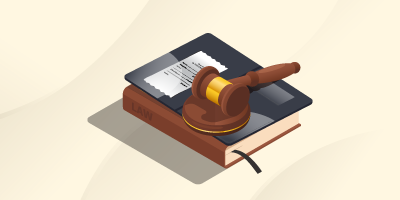The majority of eDiscovery work takes place in the context of litigation, but a significant amount of it also takes place in the context of regulatory agency investigations. Among the most challenging types of such investigations are second requests. Although the available ESI and eDiscovery tools are the same, handling eDiscovery for second requests is different from handling eDiscovery for litigation in some ways worth discussing.
What Are Second Requests?
Under the Hart-Scott-Rodino Antitrust Improvements Act of 1976, 15 U.S.C. § 18a, the parties to certain mergers or acquisitions must notify the Federal Trade Commission (FTC) and the Department of Justice (DOJ) before the intended merger or acquisition can be completed. The parties must then wait a period of time while the agencies review the proposed deal for any antitrust concerns, typically 30 days.
During this review period, parties have the opportunity to provide initial materials to aid the agencies in their review voluntarily or through response to a “Voluntary Request.” This initial request is focused on gathering essential product or service information, market and competitor information, deal and analysis information, and company information.
Based on their review of the initially provided information, the agencies can choose to request additional information and documentary materials pursuant to 15 U.S.C. § 18a(e)(1)(A):
The Federal Trade Commission or the Assistant Attorney General may, prior to the expiration of the 30-day waiting period (or in the case of a cash tender offer, the 15-day waiting period) specified in subsection (b)(1) of this section, require the submission of additional information or documentary material relevant to the proposed acquisition . . . . [emphasis added]
This is known as a “Second Request,” and it is much more extensive than an initial request. Issuance of a second request stops the clock on the waiting period until substantial compliance when the second request is achieved, at which point a new waiting period for final review begins.
What Do Anti-Trust and Merger Investigation Second Requests Ask For?
As noted above, second requests are much more involved than initial ones. The DOJ’s Model Voluntary Request Letter makes just 9 requests for essential information and documents, while the FTC’s Guidance for Voluntary Submission makes only 8. In contrast, the DOJ’s Model Second Request makes 39 requests for information and documents, many with multiple sub-parts, and the FTC’s Model Second Request makes 29 requests, many also with multiple sub-parts:
DOJ Model Second Request Topics
- “The Company & This Request” – 6 Requests, 25 Sub-Parts
- “Products & Facilities” – 3 Requests, 9 Sub-Parts
- “Customers & Sales” – 2 Requests, 3 Sub-Parts
- “Competitors & Entry” – 5 Requests, 11 Sub-Parts
- “Marketing & Competition” – 7 Requests, 14 Sub-Parts
- “The Transaction & Its Potential Efficiencies” – 6 Requests, 18 Sub-Parts
- Circumstance-specific topical areas:
- “Trade Associations” – 2 Requests
- “Products of Discovery” – 2 Requests
- “Failing Firm/Bankruptcy Sale” – 4 Requests, 9 Sub-Parts
- “Transportation Costs” – 1 Request, 5 Sub-Parts
- “Bids” – 1 Request, 11 Sub-Parts
FTC Model Second Request Topics
- Organizational Details – 1 Request, 4 Sub-Parts
- Product/Service Details – 3 Requests, 9 Sub-Parts
- Product/Service Marketing, Strategy, And Analysis – 3 Requests, 6 Sub-Parts
- Product/Service Pricing – 2 Requests, 5 Sub-Parts
- Datasets and Databases – 1 Request, 14 Sub-Parts
- Financial Records – 1 Request
- Competitors and Entry – 3 Requests, 8 Sub-Parts
- Facilities and Trade – 3 Requests
- The Proposed Transaction – 6 Requests, 22 Sub-Parts
- Bids – 1 Request, 14 Sub-Parts
- Board Materials and Minutes – 1 Request, 2 Sub-Parts
- Document Retention – 1 Request
- Service of Process – 1 Request
- Response Preparation – 2 Requests, 5 Sub-Parts
Types of ESI
On these myriad topics, these agencies are also requesting a wide range of types of material, just as in traditional litigation, including everything from email and Office documents to mobile messages and Slack chats. For example, here is the DOJ Model Second Request’s expansive definition of documents:
The term “documents” means all written, printed, or electronically stored information (“ESI”) of any kind in the possession, custody, or control of the Company, including information stored on social media accounts like Twitter or Facebook, chats, instant messages, text messages, other Messaging Applications, and documents contained in Collaborative Work Environments and other document databases. “Documents” includes metadata, formulas, and other embedded, hidden, and bibliographic or historical data describing or relating to any document.
Absent a negotiated agreement to the contrary, no type of relevant ESI can be excluded just because it’s less common, inconvenient, or new. The FTC warns explicitly that request recipients “should not unilaterally omit any category of documents and materials from their preservation, collection, and production of documents in response to FTC Second Requests.”
What Standard Applies to Second Request Responses?
Unlike discovery responses in traditional litigation, which are governed by standards of reasonableness and proportionality drawn from Federal Rule of Civil Procedure 26(b) and (g), second request responses are subject to a “substantial compliance” standard drawn from 15 U.S.C. § 18a(g)(2). Unfortunately, the substantial compliance standard is not clearly defined in the applicable statutes or rules.
According to the original rule promulgation, a “complete response” is required to achieve substantial compliance, but the intention was also for substantial compliance to be determined on a case-by-case basis, according to the specific facts:
A complete response, within the meaning of the act and rules, is one that supplies all requested information. Anything less than a complete response potentially is not substantial compliance. The rule does not define substantial compliance, and the agencies contemplate resolving whether a person has substantially complied on a case-by-case basis.
43 Fed. Reg. 33,508 (1978). This approach is echoed by comments in the Congressional Record:
A broad and liberal interpretation of the doctrine of “substantial compliance” should protect the rights of the Government as well as the parties to the proposed merger. Thus, a company would not fail to “substantially comply” if it withheld information, for example, that was subject to a legitimate privilege. And plainly, Government requests for additional information must be reasonable. . . .
All the equities of the particular situation should be considered in determining what constitutes “substantial compliance.”
Rep. Rodino, 122 Cong. Rec. 30,876-77 (1976) [emphasis added].
If a disagreement arises over whether or not a party has substantially complied, each agency has an internal appeals process (DOJ Appeals, FTC Appeals).
What Makes eDiscovery Challenging for Second Requests?
eDiscovery for Second Requests comes with all of the usual challenges of large-scale eDiscovery, including diverse source types, challenging data types, large volumes, and potentially, cross-border and data privacy issues. Second requests are especially challenging for two reasons: significant time pressure and limited negotiability.
Significant Time Pressure
By their very nature, large mergers and acquisitions are time-sensitive deals, dependent in part on the market fluctuations of share prices, commodity prices, interest rates, and other factors. Once parties are ready to move forward with a successfully negotiated deal, it is generally in the interest of all stakeholders for the deal to be completed as expeditiously as possible. Because the clock stops while the agencies await responses to their second requests, how long it takes the parties to complete the necessary eDiscovery is a major factor in how long their deal will be kept on hold.
Thankfully, there is a range of tools, services, and approaches that can significantly speed up an eDiscovery process:
- To improve readiness, proactively engage in data mapping to learn what exists and where it is, as well as data remediation to reduce irrelevant volumes.
- When approaching a major deal, use the model requests to begin identification, preservation, and collection, before filing the proposed deal with the agencies.
- When processing and analyzing collected materials, make extensive use of advanced analytic features to reduce volume and find relevant materials more quickly
- When reviewing, leverage TAR/CAL approaches (with agency approval) to speed review, and consider using managed review services for rapid deployment and scalability.
- When producing, leverage a rolling production schedule, if possible, to avoid bottlenecks.
Limited Negotiability
In litigation, parties are encouraged to negotiate about discovery scope and process, and they come to the table with legally equal bargaining power. When dealing with a federal regulatory agency, however, bargaining power is not at all equal and the agency can largely dictate the scope and process it prefers. Timing agreements are typically the one opportunity for some negotiated limitations on scope and process for a second request.
Under the statute, the agencies are required to render their final decision within 30 days after substantial compliance with a second request is certified, which is a challenging deadline for a busy federal agency trying to complete a major review and analysis. Timing agreements are negotiated agreements between the parties and agency staff in which the parties agree to wait 60 or 90 days after certification, instead of 30, and in exchange, the agency staff agrees to certain limits on the scope and process of discovery (e.g., caps on custodians, rolling production schedules, caps on depositions, etc.). Both the DOJ and the FTC have published model timing agreements and guidance: DOJ Model Timing Agreement and DOJ Guidance; FTC Model Timing Agreement and FTC Guidance.
About the Author
From the author
Measuring Success: Corporate Counsel Guide to Metrics-Based Management
The metrics-tracking legal department gains actionable insights that it can apply not only to internal operations but also to broader, corporate-wide assessments that impact decision-making.
Gone Viral: Social Media in eDiscovery
In 2015, the first explicit reference to social media appeared in the FRCP. Since then, many new cases involving social media evidence have appeared each year, and the vast majority of law firms have handled at least some cases involving such evidence.




